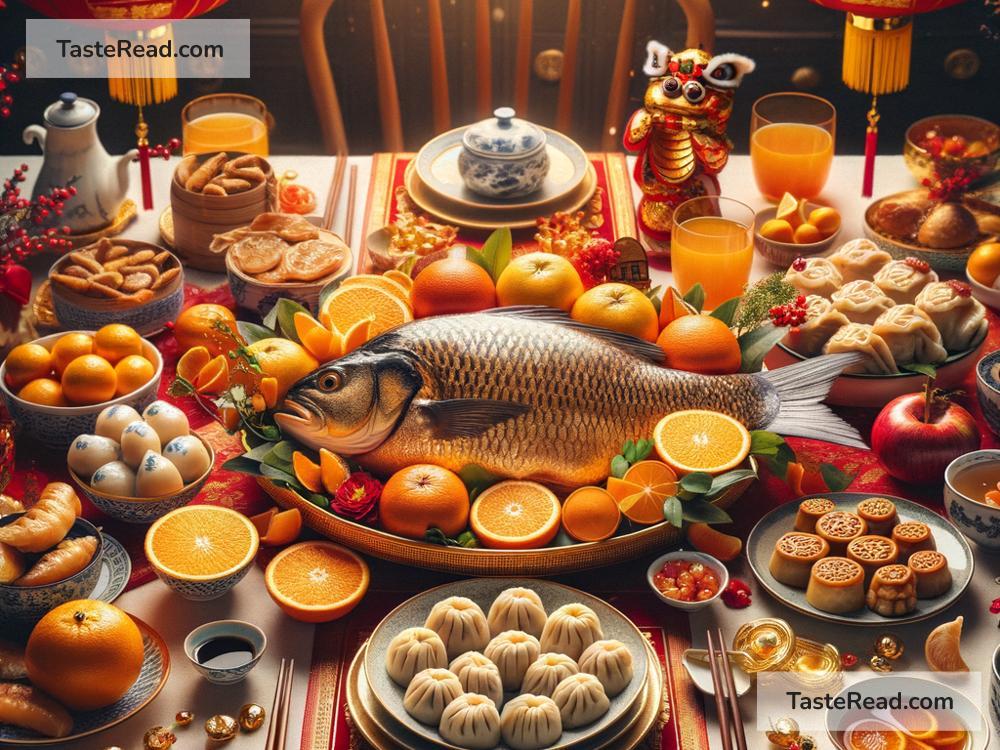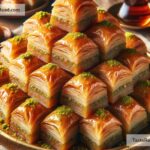The Symbolism of Food in Chinese New Year Celebrations
Chinese New Year, also known as the Lunar New Year or Spring Festival, is one of the most important holidays in China and many other countries that celebrate the festival. It marks the beginning of the lunar calendar and lasts for 15 days, filled with traditions, reunions, and, of course, delicious food. Food plays a central role in Chinese New Year, not just because it brings families together, but because every dish carries special meanings and symbolizes good luck, prosperity, and happiness for the year ahead.
Let’s explore the symbolism of some traditional Chinese New Year foods and why they are so significant.
Dumplings (饺子 – Jiǎozi): Wealth and Prosperity
Dumplings are one of the most popular foods during Chinese New Year, especially in northern China. They are shaped like ancient Chinese gold ingots, which were used as currency long ago. Because of this, dumplings symbolize wealth, and eating them is believed to bring financial success in the coming year.
Many families make dumplings together on New Year’s Eve. Sometimes, a coin is hidden inside one of the dumplings, and whoever finds it is said to have extra good luck and prosperity. Some people add certain ingredients to the dumplings, like cabbage for longevity or leeks for wealth, further enhancing their symbolic meaning.
Fish (鱼 – Yú): Abundance
Fish is a must-have dish during Chinese New Year celebrations because the word for fish in Chinese, “yú,” sounds like the word for “surplus” or “abundance.” The saying “年年有余” (Nián nián yǒu yú) means “May you have surplus year after year.” Serving fish represents the hope for abundance—not just in food, but in wealth, happiness, and success.
How the fish is served also matters. It is often presented whole to symbolize completeness and unity. Additionally, the head and tail must remain intact, representing luck from the beginning to the end of the year. People usually save some fish to eat the next day, symbolizing that the surplus carries forward.
Spring Rolls (春卷 – Chūnjuǎn): Gold Bars
Spring rolls are another festive food that symbolizes wealth. These crispy, golden rolls resemble gold bars, making them a lucky snack for those wishing to attract prosperity in the coming year. They are usually filled with a variety of ingredients, such as meat, vegetables, or sweet fillings, and are often served as appetizers or snacks during the holiday.
Families enjoy making and eating spring rolls together, sharing joys and hopes for a bright future.
Noodles (面条 – Miàntiáo): Long Life
Noodles are a traditional dish during Chinese New Year, and they are not just any noodles—they are often “longevity noodles” (长寿面 – Chángshòu Miàn). These noodles are longer than regular noodles and are served uncut to symbolize long life and good health.
The way you eat them is also important. Slurping the noodles without breaking them is believed to bring an even longer life. Whether stir-fried, boiled, or served in soup, longevity noodles are a simple yet meaningful dish that highlights the wish for longevity.
Sticky Rice Cake (年糕 – Niángāo): Rising Success
Sticky rice cake, or “niángāo,” is a chewy, sweet treat made from glutinous rice. The name “niángāo” sounds like “higher year” (年高), which means progress or promotion in the year ahead. Eating sticky rice cake symbolizes rising success—whether in your career, studies, or personal achievements.
Families often make niángāo together, and it comes in various flavors and shapes, depending on the region. Regardless of how it’s prepared, the sticky rice cake carries the hope for bigger and better things in life.
Oranges and Tangerines (橙子/桔子 – Chéngzi/Júzi): Good Fortune
Fruits like oranges and tangerines are commonly exchanged and displayed during Chinese New Year because of their bright, golden color, which represents wealth and good fortune. Additionally, the word for orange, “chéng,” sounds similar to “success” (成), while the word for tangerine, “jú,” is associated with luck.
Offering oranges and tangerines to guests or placing them around the house symbolizes sharing and attracting positive energy, prosperity, and happiness.
Sweet Rice Balls (汤圆 – Tāngyuán): Family Unity
Sweet rice balls, known as “tāngyuán,” are an important food for Chinese New Year, especially during the Lantern Festival, which marks the end of the celebrations. These round, glutinous rice balls are often filled with sweet fillings like sesame paste, red bean paste, or peanut paste. Their round shape symbolizes togetherness and family unity.
Eating tāngyuán during the New Year is a heartwarming tradition that reminds everyone of the importance of staying connected with loved ones.
Symbolic Food and Cultural Meaning
The food served during Chinese New Year represents more than just sustenance; it conveys hopes, blessings, and values deeply rooted in Chinese culture. Through these dishes, people express their desires for prosperity, health, happiness, and family unity.
Preparing and enjoying these foods is also a way to honor traditions and bridge generations. Sharing meals with loved ones reinforces the spirit of togetherness, which is at the heart of Chinese New Year celebrations.
Next time you celebrate Chinese New Year, take a moment to appreciate the symbolic meaning behind the food on the table. Each bite carries wishes for a brighter and better year ahead, making every dish truly special.
Happy Chinese New Year! May your year be filled with abundance, joy, and success!


